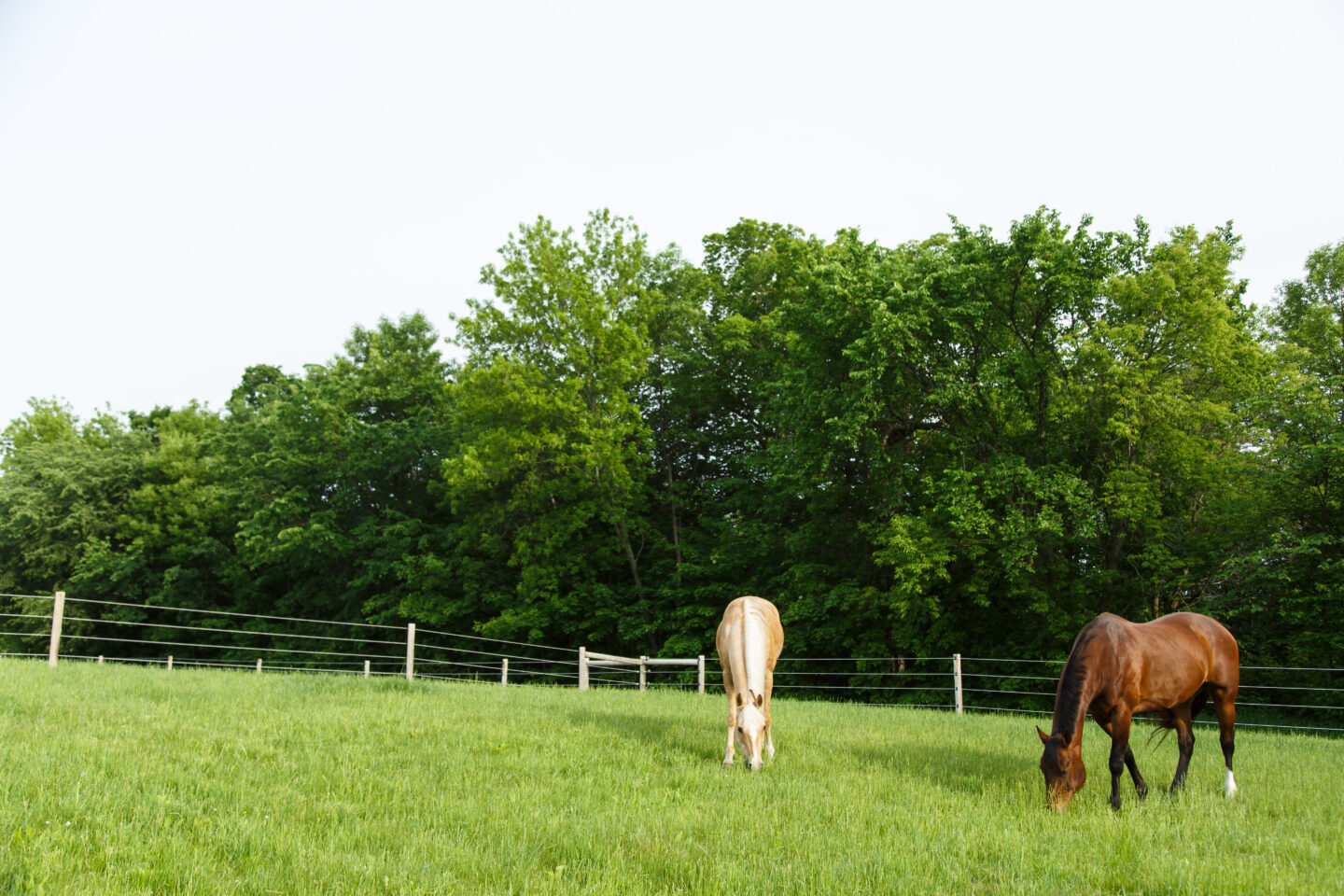Ask the Expert: Grazing a Newly Seeded Pasture

Pasture Maintenance
One of our owners reached out with concerns about maintaining their newly seeded pasture:
This spring, we planted 2.5 acres of pasture for our horses. The grasses are now 6 inches tall and the stand density appears good. Should we mow the pasture? If so, how often? When should we start grazing?
Maintaining A Newly Seeded Pasture
You will want to mow the pasture 3 times before allowing the horses to graze. Since the grass is 6″ tall, mow it down to 3″ and allow it to re-grow to 6″, then mow again. Follow this cycle until you have mowed the pasture 3 times. This is critical since new grass seedlings need time to firmly root into the ground. Mowing helps to stimulate root growth and anchors the plant without the physical pressures of grazing. If the pasture is grazed too soon, horse can pull new grass seedlings out of the ground. Mowing will also help control some weeds that are common in new pasture seedings.
Once you have mowed 3 times and the grass has regrown to 6″, you can start grazing the horses. If the horses are acclimated to pasture, they can be allowed to graze until the pasture is, on average, grazed down to 3″. At this time, you would rotate the horses off the pasture, mow the pasture to 3″, allow the pasture to regrow to 6″, then graze again. You would keep repeating this process until the pasture stops regrowing in the fall; it is critical to allow the pasture to rest and regrow. Unfortunately, horses do not graze uniformly, so mowing is necessary to ensure the pasture regrows evenly, plus mowing will help control some weeds.
If your horses are not acclimated to pasture, then start grazing in 15 minutes increments, adding 15 minutes each day until you reach 5 hours of consecutive grazing. For example, 15 minutes on day 1, 30 minutes on day 2, 45 minutes on day 3, etc. This allows the horses to slowly acclimate to pasture and reduces the risk of laminitis and colic that is often seen with abrupt diet changes.
Along with mowing, make sure to drag manure piles 2 to 3 times a year during hot and dry times, fertilize as needed, and control weeds.
